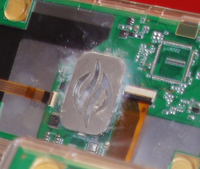You are using an out of date browser. It may not display this or other websites correctly.
You should upgrade or use an alternative browser.
You should upgrade or use an alternative browser.
Some personal stuff - and prototypes building!
- Thread starter EvilDragon
- Start date
Silent-Hunter
Hardcore Member
- Joined
- May 29, 2010
- Messages
- 3,485
Sleep well and be well!
Sounds great indeed,
2 Weeks for the Cases, on a Pandora Like Device.. ..
2 Weeks for the Cases, on a Pandora Like Device.. ..
Aaaand the first post has been updated with all the nice new pictures 
atari_afternoon
Very Active Member
Yes, it was edited by him "Last edited: Today at 6:39 PM" 
Well, I continued the assembling March 20th... 
Grench
Forum Addict!
- Joined
- Oct 3, 2008
- Messages
- 6,629
I think what he is referencing is that the dates stated in the updates on the updates to message one say that they are from 2018...Well, I continued the assembling March 20th...
Oh... whoops 
Has the new year already started?
Has the new year already started?
Silent-Hunter
Hardcore Member
- Joined
- May 29, 2010
- Messages
- 3,485
Oh, yeah they both say 2018!
levi
Still fresh, damnit!
I assume this smudged frosting is overspill from whatever glue you're using. I guess when you were wiping off the excess you thought you'd got all of the glue, and it was only when it dried white that you saw it. Shouldn't be visible like that on a non-transparent case of course, although it would still show in the clear oval behind the logo. But I think you said production lids would have the logo glued in by the plastic firm, so it remains to see how good a job of it they do (and if they use a glue that dries clear).
Attachments
comradekingu
Glowing ember
Make sure the glue can be heated to be removed, because that is coming off.
I assume this smudged frosting is overspill from whatever glue you're using. I guess when you were wiping off the excess you thought you'd got all of the glue, and it was only when it dried white that you saw it. Shouldn't be visible like that on a non-transparent case of course, although it would still show in the clear oval behind the logo. But I think you said production lids would have the logo glued in by the plastic firm, so it remains to see how good a job of it they do (and if they use a glue that dries clear).
Yeah, though I don't plan to use glue in the end, it's just for the prototypes.
For the final units, we need the logo plate to be self-adhesive with 3M glue. Those are a lot stronger, are easier to handle (pull off the foil and simply put it in) and they can be easily removed with heat
Same for the magnets.
I am so looking forward to this i mainly want to install retro emulators on it x2 400gb cards in both slots.
[doublepost=1553259106,1553258862][/doublepost]I really like the dark red in the renders but will the final case look that nice?
[doublepost=1553259106,1553258862][/doublepost]I really like the dark red in the renders but will the final case look that nice?
And a quick update:
They are working on improving the shoulder buttons. An easy fix for an improvement would be to add a spring to the lower buttons, which can be seen in a first test here:
Honestly, I'm not sure where the spring is hidden - but it seems to work fine
They are working on improving the shoulder buttons. An easy fix for an improvement would be to add a spring to the lower buttons, which can be seen in a first test here:
Honestly, I'm not sure where the spring is hidden - but it seems to work fine
Neelix
Insecticidal Maniac
It's not hidden, it's attached to the end of the screw. It's just very hard to see because it's a black spring against a black background.Honestly, I'm not sure where the spring is hidden - but it seems to work fine
-Neelix
It's not hidden, it's attached to the end of the screw. It's just very hard to see because it's a black spring against a black background.
You're right, thanks
Djoga'Ro
moonstruck
- Joined
- Apr 3, 2016
- Messages
- 2,624
USB portsIs there a possibility for a camera on the device at all?
Similar threads
- Replies
- 268
- Views
- 113K


